· Provide an overview of the official approaches to EAL over the past 30 years or so,
· Briefly outline associated research into EAL pupil’s both national and international,
· The current attainment of EAL pupils in England
· Highlight examples of best practice in schools across regions and LA
· Stress the urgent need for a more nuanced and focused strategy for pupils for whom English is an additional language at a national level
· Outline recommendations
The intended purpose of the paper is to encourage reflection, debate and forward strategy at a time when the current education system is undergoing considerable change leading to both potential opportunities and considerable challenges. In such situations there is the strong likelihood that the needs of some groups of pupils are missed especially when the spotlight is shifted to other groups who are deemed more worthy or more in vogue, leading to unnecessary binary approaches to raising attainment.
This blog posting summarises some of the key headlines of this paper.
The DfE recently released the latest statistics on the number of pupils for whom English is an additional language (EAL). These figures show that there are now over 1 million pupils whose first language is other than English, with the percentages in primary standing at 18.1% compared to 17.5% last year and 13.6% for secondary showing a 0.7% increase on last year. These annual increases show the growing number of EAL pupils in schools in England and are illustrated in the graph below:
The attainment results over the past few years have shown that outcomes for EAL pupils have improved significantly leading to the attainment gaps virtually closing at a national level in terms of the gold standard 5 A*-C including English & Maths grades at GCSE. The graph below shows how the attainment gap at a national level has virtually disappeared over the past five years.
It therefore seems appropriate to briefly take stock of where we are now in relation to meeting the needs of pupils for whom English is an additional language in England and look at the potential of where we should be in the very near future. I have listed a few key headlines below:
· At national levels gaps are closing as the graph above shows. These results also mean that some of the powerful negative myths that have perpetuated in relation to bilingual pupils and their attainment are being exploded, resulting in the fact that bilingual pupils can and should achieve academic excellence as a matter of course.
· Better outcomes in attainment mean that more EAL pupils have the potential to accrue the benefits of higher education. This should contribute to better opportunities for gainful employment and improved life chances resulting in economic, social and health benefits for many more community members in the future.
· Generally most minority ethnic pupils have higher proportions of pupils for whom English is an additional language, with the exception of Black Caribbean pupils. This means that the positive aspects of being bilingual such as those outlined by many academics such as Jim Cummins, Colin Baker, Stephen Krashen, Tove Skutnabb- Kangas and more recently Ellen Bialystok can be used as a lever to support the learning of minority ethnic pupils currently not performing in line with their peers nationally.
· Indian and Chinese pupils have been performing much higher than their peers for many years now. Both of these groups have high proportions of bilingual speakers, with over 80% of Indian pupils and 73% of Chinese pupils speaking English as an additional language.[1] More recently the performance of Bangladeshi pupils nationally has also accelerated with impressive performances. Previous reasons cited for Indian and Chinese pupils academic success have been attributed to lower rates of free school meal eligibility in these groups at 12% for Indian pupils and 14% for Chinese pupils. However, the performance Bangladeshi pupils, with one of the highest free school eligibility figures at 52%, add to the growing body of evidence which shows that pupils eligible for free school meals also perform very highly, setting the precedence for others to follow.
· There is growing evidence which is exploding many of the myths surrounding EAL pupils. An example of this of is the recent research undertaken by Professor Sandra Mc Nally et al from the London School of Economics, Centre for the Economics of Education. Their research shows that EAL pupils do not negatively impact on standards for non-EAL pupils. For further details read my previous blog here)
HOWEVER, despite the seemingly positive picture emerging at a national level, there remain significant CHALLENGES
· There are extreme variations in EAL pupil’s attainment by region which the national figures mask. Nationally 58% of EAL pupils in England achieved 5 A*- C in English in Mathematics in 2012. However, EAL pupils in London performed 4.5 percentage points higher at 62.5% compared to those in Yorkshire & Humber who performed nearly 10 percentage points lower at only 48.5%. The graph below shows the regional variations in EAL pupils attainment 5 A*-C in English and Maths in 2012
[1] Figures cited are from ‘Ethnicity and Educational Achievement in Compulsory Schooling’ by Christian Dustmann, Stephen Machin and Uta Schonberg in The Economic Journal 2010.
· The success in closing of the gap of EAL pupils nationally can be attributed to a large extent to the higher performance of EAL pupils in London and West Midlands, where there are larger concentrations of EAL pupils, with improvements in London largely due to the success of ‘The London Challenge’. Amongst the various strategies which have been cited in accounting for the success of the London Challenge, the Pan EAL London EAL Strategy is worth highlighting for particular attention. The Pan EAL London Strategy enabled LA’s to receive additional funding to support effective teams to provide support for EAL pupils and to spread this expertise across London. The effectiveness of this work has been highlighted by M Hutchings and A Mansaray in ‘A review of the impact of the London Challenge (2003-8) and the City Challenge (2008-11)’ submitted as evidence to Ofsted’s ‘Access and Achievement’ Review a few months ago.
· There are further variations in EAL pupil’s performance when looking at other characteristics such as ethnicity, socio-economic background and gender. Socio-economic gaps are more pronounced for White British groups compared to most ethnic minority groups. For some minority ethnic groups this is because non – free school meal pupils are less likely to come from families with higher socio-economic and professional backgrounds so the differences are less marked. Since national data is not available by ethnicity and EAL, ethnicity data can provide a useful indicator of performance, bearing in mind the intersections of ethnicity and EAL. The differences in performance by FSM eligibility and ethnicity are shown in the graph below:
· There are considerable differences in attainment when looking at key stages with outcomes much lower for all minority ethnic and EAL pupils at the start of schooling and even at the end of primary for most groups compared to secondary where most of the gains for EAL pupils are made. This is well documented by researchers.[1] This means the potential outcomes of EAL pupils could be accelerated further if the progress seen in secondary, particularly at KS 4 was replicated in primary.
· Gender differences also impact across various regions with EAL girls generally performing much higher than both non-EAL and EAL boys with the exception of the Yorkshire & Humber region where EAL girls performed marginally better than EAL boys but lower than non – EAL girls and boys. The graph below shows how EAL and Gender characteristics lead to extremely differential outcomes across regions with EAL boys in the South West performing the lowest in 2012 leading to a gap of 16.9% compared to their peers in London.
[1] ‘The Dynamics of School Attainment of England’s Ethnic Minorities’by Deborah Wilson, Simon Burgess and Adam Briggs CASE paper 2006,
‘A Comparative Analysis of Bangladeshi and Pakistani Educational Attainment in London Secondary Schools’ by Sunder Divya and Layli Uddin 2007,
Drivers and Challenges in Raising the Achievement of Pupils from Bangladeshi, Somali and Turkish Backgrounds by Steve Strand et al 2010 and Figures cited are from ‘Ethnicity and Educational Achievement in Compulsory Schooling’ by Christian Dustmann, Stephen Machin and Uta Schonberg in The Economic Journal 2010.
· Another consideration is in relation to the performance of EAL pupils in mainly white LA’s. The issues are complex and may be down to the arrival of newer communities or lack of strategy and expertise in supporting EAL pupils particularly when EAL pupils are dispersed across an LA and are considered to be relatively small.
It seems that we in England are at the cusp of making sustained changes in ensuring better educational outcomes for our EAL pupils, many of whom until recently have been languishing behind their peers. Taking a long view there is much to be celebrated and built upon. However, considering the fact that it has taken us over 30 years to get to this stage, with the gains by no means sustained nationally for all key stages and certainly not across regions and LA’s it is imperative that the best practice that is evident is disseminated as a matter of urgency to so that the momentum continues to be built upon. Sadly, although the national results for EAL pupils are applauded there is little if any emphasis on meeting the needs of EAL pupils in other areas or indeed in using flagship policies such as the Pupil Premium to stress the interlinked relationships that exist for EAL pupils and other characteristics such as free school meal eligibility. A more focused and nuanced policy at a national level is required to ensure that the potential of all EAL pupils, irrespective of ethnicity, socio-economic backgrounds and gender is realised and the impact of where you live or which you school you go to does not result in a lottery in achieving better educational outcomes.
The headlines are based on a detailed paper which is currently being written by Sameena Choudry on EAL pupils in England and the need for a nuanced strategy to close the gaps.
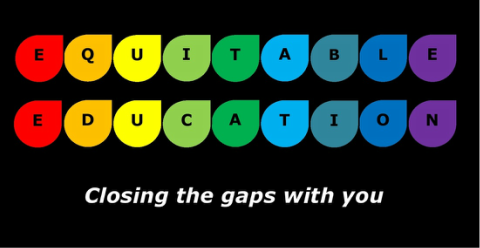
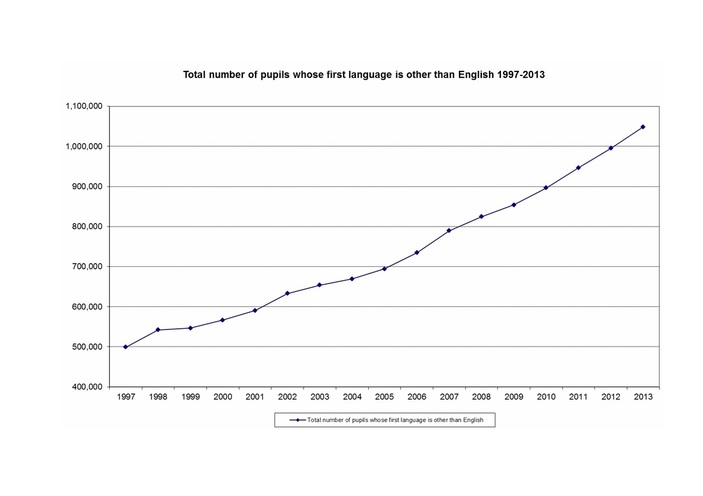
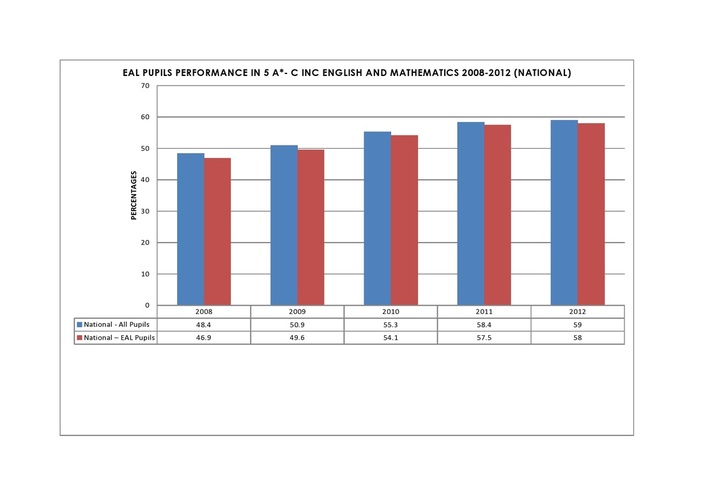
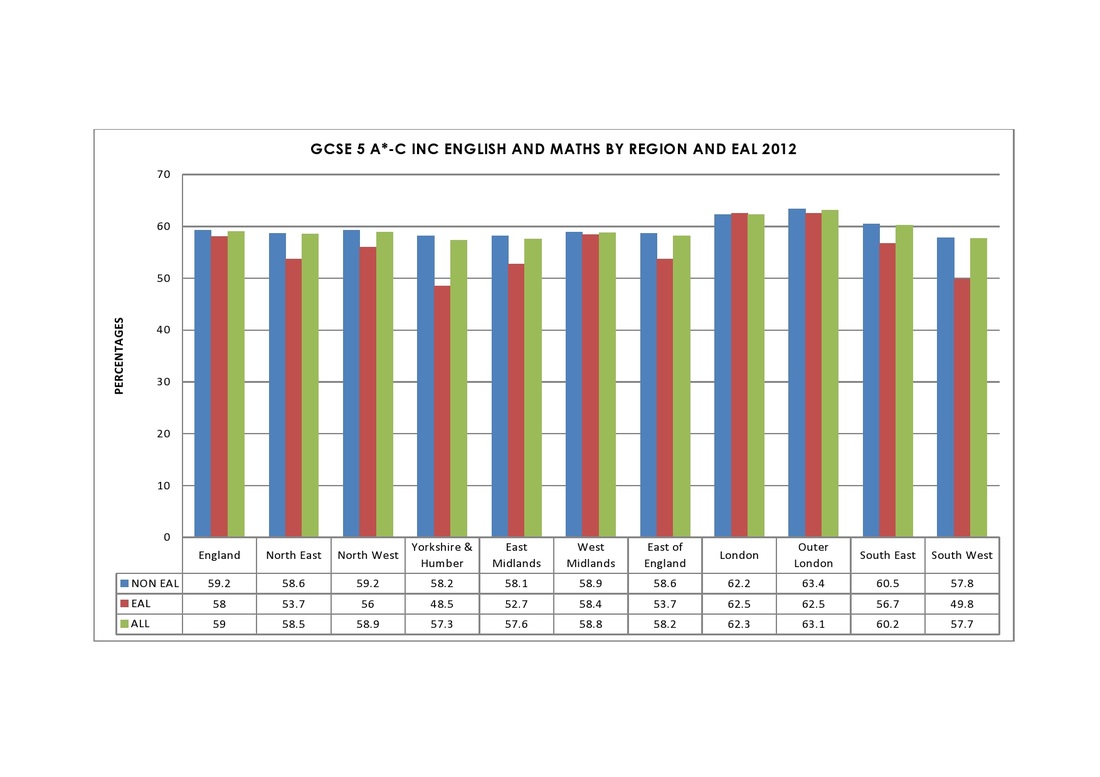
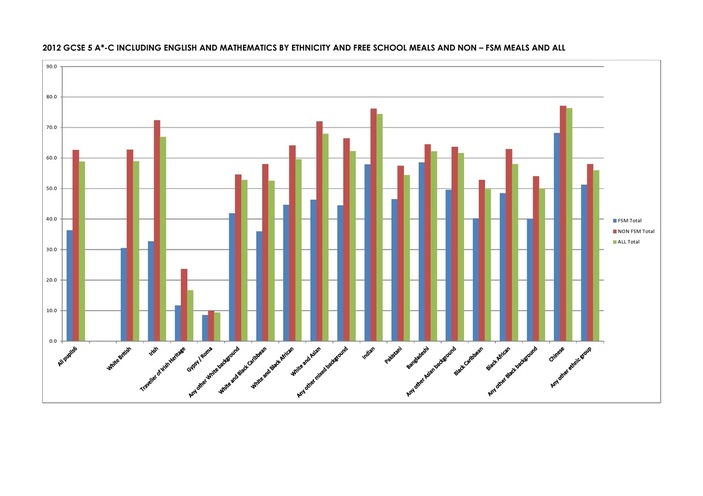
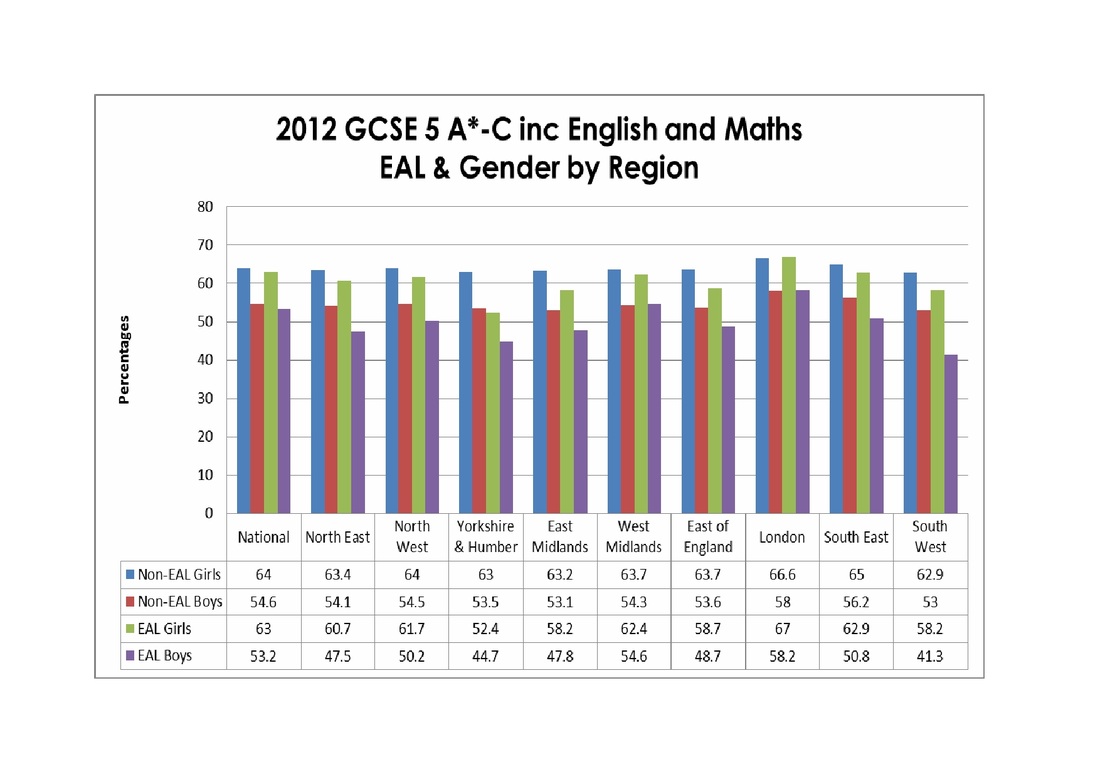
 RSS Feed
RSS Feed
